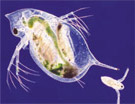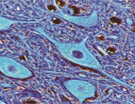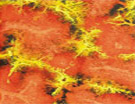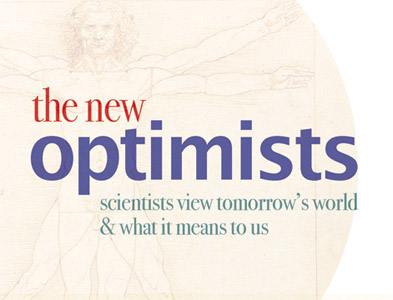Scientists may spend a lot of time thinking, but their thoughts — and their actions — are always grounded in a very real practicality. And perhaps none more evidently so than scientists engaged in the production of food from farmed animals.
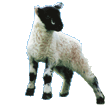 Think of the breathing, watchful bulk of cows grazing, for example, or the gregarious grunt-snuffles of pigs at the trough, or white-blobs-on-fells that turn out when closer to be sheep. Professor Laura Green‘s aim is to reduce clinical impact of endemic infectious diseases of farmed animals such as these, knowing we can further our understanding of infectious disease processes through data collection, careful analysis, modeling and interpretation in a biological framework.
Think of the breathing, watchful bulk of cows grazing, for example, or the gregarious grunt-snuffles of pigs at the trough, or white-blobs-on-fells that turn out when closer to be sheep. Professor Laura Green‘s aim is to reduce clinical impact of endemic infectious diseases of farmed animals such as these, knowing we can further our understanding of infectious disease processes through data collection, careful analysis, modeling and interpretation in a biological framework.
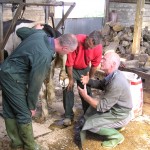 Gone are the days when we believed we could produce low cost food at any price, including poor animal health. It’s now possible to monitor, for example, a dairy cow all its life. And the sheer volume of data such monitoring from so many sources is overwhelming.
Gone are the days when we believed we could produce low cost food at any price, including poor animal health. It’s now possible to monitor, for example, a dairy cow all its life. And the sheer volume of data such monitoring from so many sources is overwhelming.
This means moving from a reductionist approach for researchers such as Professor Green, to an assimilatory one. With developments in communication, data capture, storage and processing, it will be possible to address increasingly complex problems; see, for example, the Lame Cow Project she’s involved in.
 Professor Laura Green is an epidemiologist in the Department of Biological Sciences at Warwick University. She leads multidisciplinary teams to reduce the clinical impact of endemic infectious diseases of farmed animals. Of current interest are three research projects on the control of footrot in sheep; one combines laboratory studies of persistence of D. nodosus, the causal organism, and mathematical modeling of persistence, one is investigating a novel approach to treatment and control in a clinical trial and one is on technology transfer to the sheep industry.
Professor Laura Green is an epidemiologist in the Department of Biological Sciences at Warwick University. She leads multidisciplinary teams to reduce the clinical impact of endemic infectious diseases of farmed animals. Of current interest are three research projects on the control of footrot in sheep; one combines laboratory studies of persistence of D. nodosus, the causal organism, and mathematical modeling of persistence, one is investigating a novel approach to treatment and control in a clinical trial and one is on technology transfer to the sheep industry.
For all research work at Warwick University on infectious disease epidemiology of livestock, including foot and mouth, see here.
